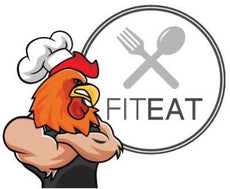If you're like most people, you probably don't think much about gluten-free and lactose-free diets unless you have to follow one yourself. But the truth is, for some people these diets can be a lifesaver. In this blog post, we'll discuss when it might be worth considering a gluten-free or lactose-free diet.
Gluten and lactose - what is that?
Gluten is a protein found in grains like wheat, barley, and rye.
Lactose is a sugar found in milk and other dairy products.
A gluten-free diet is called an elimination diet, and all because it is based on giving up products that cause undesirable symptoms and finding appropriate substitutes and supplementing with the necessary vitamins and minerals. In case of a lactose-free diet, the situation is similar, because by eliminating dairy products from the diet, the body does not get the right amount of calcium.
In order not to lead to a deficiency of minerals and vitamins, a dairy and gluten-free diet should contain gluten-free products, such as: eggs, cheese, soy drinks, rice and almonds. Legumes, quinoa, fruit, millet and vegetables, such as cauliflower or broccoli, or adding a little linseed to the dishes will also be an excellent choice.
Indications to eliminate gluten and lactose from dietThis diet should not be turned on by itself, without consulting a doctor and performing tests. First, you need to do some diagnostics to determine what is causing the problem, and if so, what type of disease is causing it:
- Celiac disease
An autoimmune condition with a genetic basis in which gluten causes the greatest harm to the body and results in many different health problems, such as abdominal pain, nutritional deficiencies, short stature, depression, constant fatigue.
- Duhring's disease - cutaneous form of celiac disease
In Duhring's disease, strongly itchy skin lesions appear most often on the elbows, knees, buttocks and around the sacrum.
- Gluten allergy (most often to wheat)
Gluten allergy is a completely different disease entity than celiac disease. Gluten is a very popular allergen - the second most common after milk. The most common symptoms are hives, watery runny nose, diarrhea, and among children - exacerbation of atopic skin lesions.
- Autoimmune diseases (Hashimoto's, rheumatoid arthritis)
In the case of this type of disease, the accompanying irritable bowel syndrome is often diagnosed.
The positive effects of a lactose-free and gluten-free diet - not only for those who are allergic!
Regardless of whether we suffer from any of the above diseases and ailments, we can still successfully use a diet that eliminates the consumption of gluten and lactose, because it has many additional benefits: digestive problems reduction,weight loss, improvement of the skin condition, reducing the occurrence of migraines.
What Foods are Gluten and Dairy-Free?
1. Fruits and Vegetables
Virtually all fruits and vegetables are gluten and dairy-free, which allows for lots of variety in nutrients and flavors in your diet.
2. Whole Grains
Rice, quinoa, amaranth, millet, corn, buckwheat, corn, and sorghum are all dairy and gluten-free grains. When purchasing oats, be sure to look for a gluten-free variety to ensure they haven't been cross-contaminated with wheat during processing.
3. Nuts and Seeds
Nuts and seeds are inherently gluten-free and dairy-free, making them a convenient source of healthy fats and plant-based protein.
4. Beans and Legumes
Black beans, white beans, kidney beans, chickpeas, and lentils are all affordable, easily found in most grocery stores. While all beans and legumes are inherently gluten-free and dairy-free, it's good to double-check the ingredients when buying canned beans to ensure no extra starches have been added.
5. Certain Proteins
Beans, legumes, tofu, most types of tempeh, most plant-based protein powders, and some plant-based protein bars are free of dairy and gluten. Many meat and dairy substitutes, such as plant-based burgers, coconut yogurt, nut milks, and dairy-free cheeses, are options for replacing some of your dairy and gluten-filled favorites.
6. Plant-Based Oils & Spices
Plant-based oils like avocado oil, coconut oil, and sesame oil are good frying and sauté options as they have a high smoke point, while oils like olive oil and flaxseed oil are great for drizzling or dressings. Similarly, most spices are inherently gluten-free and dairy-free.
Try Fit Eat Catering!
Whether you're eliminating gluten and dairy from your diet due to food sensitivities, allergies, or digestive issues, it can feel like a big sacrifice to make the switch. However, there are still lots of tasty and nutritious foods available that are naturally gluten and dairy-free, as well as many new packaged foods and substitutes for your favorites.
If you would like to try it but don't like the effort, let us do it for You! You can order a high-quality lactose-free and gluten-free diet with daily home delivery on our website!

